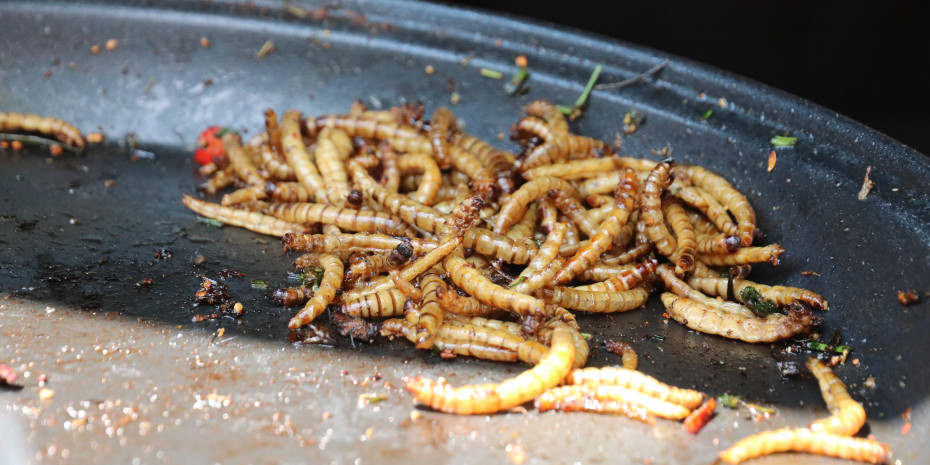"500 million cats and dogs in the world consume something like 23 billion tons of meat each year," says Tom Neish, founder of the British company Yora. The company specialises in the production of pet food using insect protein.
Insect protein is an exotic, hypoallergenic protein that only rarely triggers a reaction thanks to its low allergy potential. Industry experts forecast that the global market for insect protein will grow from the current 700 mio dollars to over 8 bn dollars by the year 2030. By then, around 50 per cent of insect protein as a whole will in all probability be used for feeding fish, 14 per cent in human food, 17 per cent on feeding poultry and pigs and 19 per cent for pet food.
"Insects are classified as farmed animals and can only be fed with ingredients authorised for farmed animals," stated Christian Ihl in his presentation. Production has proved very costly to date, however, not least on account of the amount of power required to create suitable climatic conditions, with the exception of mealworm production.
Principal species
The species considered most important for the production of pet food are the black soldier fly (Hermetia illucens; BSF for short) and the yellow mealworm (Tenebrio molitor; YMW for short). While the black soldier fly can be used to obtain protein after just 14 days, this takes much longer with the yellow mealworm - in the order of 70 to 100 days. What is common to both is the potential yield of defatted meal protein of between 60 and 70 per cent. It is thus no surprise that the BSF accounts for the biggest share of production of insect protein.
Christian Ihl attested to the high proportion of total proteins in the BSF, along with natural hypo-allergenicity, good digestibility, a high level of palatability and low carbon footprint of around 1.2-2.1 kg CO2 per kilogram of protein.
Radix Ventures invests in Proteine Resources
Proteine Resources, a Polish biotech startup, announces a new investment round with participation from Radix Ventures. Radix’s …
Not there yet
Christian Ihl pointed out that there was still some work to be done to ensure the expansion of insect protein in pet food. He said that pet food manufacturers were looking for safety, stable nutritional values, reliability of supply and compatibility with their production technology as well as sustainability and a low carbon footprint. They were also seeking assured acceptance by…

 Menü
Menü








 3/2021
3/2021













 Newsletter
Newsletter